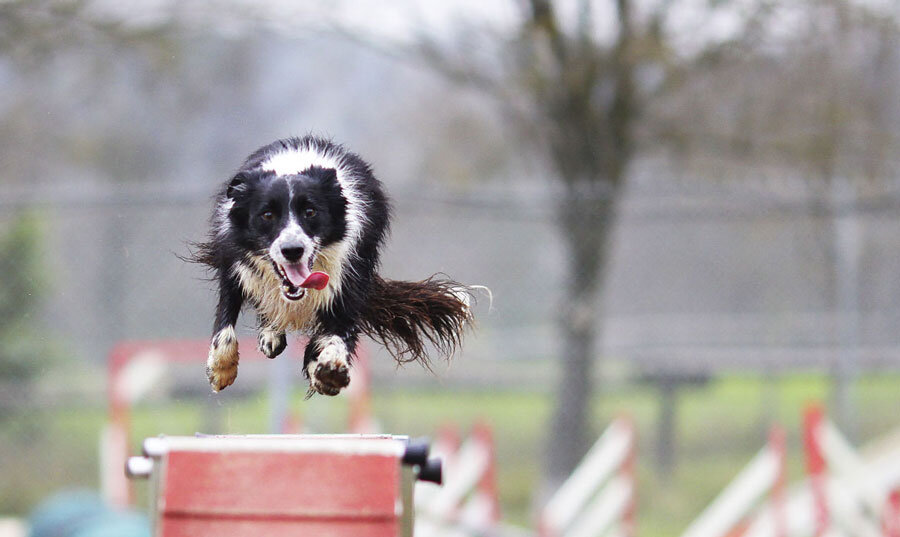Making agility training plans 101
- keep your motivation high and dog healthy
Why is it important to plan your training?
Making proper training plans in agility isn’t only for those at top level. It concerns everyone and here are the reasons why:
Making training plans helps you avoid running in circles and getting frustrated and stuck with your agility skills. Training plans work as a map - you’ll know where you are going, and you won’t get lost. When you have a clear focus, you start approaching it step by step instead of going here and there. You actually get forward, your motivation stays high and you will most probably continue to stay hooked on this wonderful sport.
Another reason for planning your training concerns your dog. Agility requires many skills from the dog and without plans, training is inefficient and takes more repetitions. This, again, strains the dog unnecessarily. If you’ve set good plans and follow them, you reach each needed skill with fewer repetitions.
The ebook can be downloaded and printed as a PDF.
Step 1. Where do you want to go? Set the destination
Whether you want to travel to Stockholm or the Maldives, or even to your local store, you need to know where your destination is located and what transportation you need to get there: do you need to first walk to your car, drive to the airport, then take a plane to one point and change flight in another town? It’s similar when we talk about agility, so, let’s start with setting your destination.
First you need to define approximately where you really want to go: some people love beaches and the sun, some like small authentic towns, and some just love to hike in a nearby forest.
Also in agility, goals can differ a lot, depending on what you enjoy. It’s really up to you. So the ultimate goal can be anything and if it’s not AWC, don’t think less of yourself. But, and this is an important but, whatever your goal is, please don’t ignore planning. You need it always.
When setting your destination, you need to estimate your resources: do you have what it takes to get all the way to the Maldives or would e.g. Croatia be a more suitable choice for your budget? Similarly, you need to define what’s realistic when you set your goals and make training plans in dog agility.
So, figure out what is realistic: what is your dog’s potential and how much time are you ready to put into your training.
Here, you should dare to dream. Most people think less of themselves and their dogs and they settle for very low goals - and thus, underperform. Of course, there are also people who have totally unrealistic goals.
If you feel uncertain about what is realistic for you, ask for your coach’s opinion. But remember, even your coach can be wrong, so if his opinion differs a lot from yours, listen to it, analyze it, but think for yourself.
“If you want to get to the next level, it’s important to concentrate on the moment: on the theme at hand and the dog in front of you.
”
Step 2. Drawing the map - How to get there?
Ok, now you’ve set the destination. Next, you need a map. Here Google maps won’t do, and there are no “one size fits all” models or magical recipes. And this is what makes agility so fascinating. You need to draw your own map. Yes, you.
In the end, it’s you and only you who has the responsibility of your dog training and progress in agility. The fact that you are reading this already shows that you are one of those who have realized this.
“In the end, it’s you and only you who has the responsibility of your dog training and progress in agility. ”
Taking responsibility actually already gives you so many more possibilities compared to those who hope that coaches will do the trick for them. BUT you can and should use a coach to help you with this.
There are many ways to draw a good map towards your agility dream and we’ll introduce one way here to help you get started.
Set skill goals
Now that you have already set the big goal (or destination), you need to analyze what skills you and your dog need for you to get there. Make a separate and detailed list of both. A skill may also include some sub-skills, and if you can split the skill into smaller subskills, do that. Also list them. These are your skill goals. If you use AgiNotes, add these to the Training list as training topics.
All necessary skills are not equally important, so do some analysis on their importance concerning the end goal and prioritize them. What is essential, and what, on the other hand, would be nice to master.
Make plans for exercises
Next, you need to think of a plan on how to learn each needed skill. Create a set of progressive exercises that will build the skill. Prepare the set of exercises for every needed skill, both for you and your dog.
And here, you should remember to focus on one or two things at a time. Preparing exercises that cover everything won’t take you forward as effectively.
In AgiNotes, you can add the exercises under each training topic and subtopic. This way you’ll have everything in order, you can move each exercise to your training diary with one click, and you can follow your progress easily.
How to plan successful training
Set the main goal
List the needed skills for you and your dog to get there (Training topics, subtopic)
Plan detailed exercises for reaching each skill (Exercises under Training topics and sub-topics)
Prioritize the needed skills (Training topics)
Remember to have fun!
After setting goals and making a training plan, you just need to drive towards the skill goals and stick to your path. If you do that, you will probably surprise yourself! And anyway, by doing this, you are not losing anything: instead, on the way towards your big goal, you will learn a lot about your own and your dog’s capacity.
Please note: When driving towards your goals, remember to enjoy every step, and have fun. Training in a goal-oriented, well-planned way and having fun are not contradictory. Fun should be part of agility - at all levels.
“Fun should be part of agility - at all levels. ”
AgiNotes helps you focus on your dog’s individual needs and celebrate small wins.
This way you will take steps towards the best version of you two as a team.
If you don’t yet have an AgiNotes account, you can register for free (no time limits).
Or read more.









